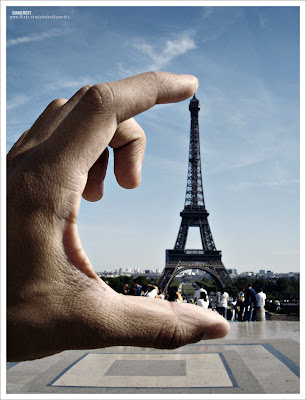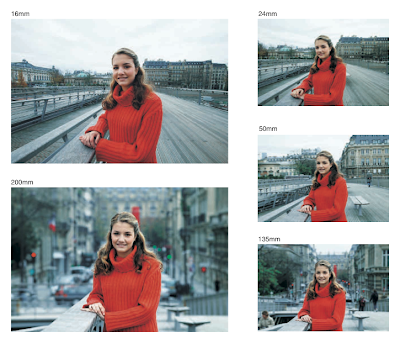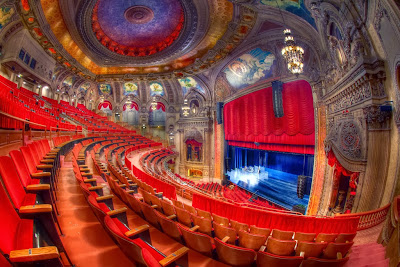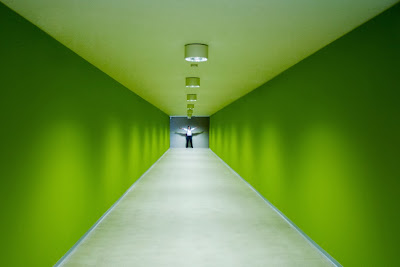Perspective Definition
The term perspective has wide spread meanings from one’s personal view to a two dimensional drawing intended to give the right impression of dimensions et cetera.
 |
| Photo by: Daniel Silveira |
In photography it can be defined as the sense of depth or spatial relationships between objects in the photo, along with their dimensions with respect to the viewpoint (camera lens or the viewer). The above explanations; though brief and to the point; most of the beginner photographers may feel it a bit hard to ‘perceive’! I am sure the following article will make it de jargonized.
What is Perspective in Photography?
 |
| Photo by: Alex Schwab |
The world we live in is a three dimensional one buta photograph has only two dimensions namely length and breadth. When a three dimensional scene is captured on a two dimensional medium; what we are actually doing is a 2D depiction of a 3D scene.
- How exactly do we do that, how an illusion of 3D can be captured in a 2D image?
- How do we demonstrate depth, sense of scale etc. in our photographs?
The answer to all this is perspective, we can effectively convert a 2D scene into a 3D scene by applying the concepts of perspective. A photographer who cannot manage these concepts will often wonder why there are unwanted distortions in his images or why they appear flat and uninteresting.
 |
| Photo by: Daniel Silveira |
Perspective refers to the relationships between objects in a photograph, the relative distance, size and space etc. perspective could be used to define a subject’s shape and form and also to convey to the viewer a sense of volume, space, depth and distance.
 |
| Photo by: Chaval Brasil |
Manipulating these factors, the photographer could either change the illusion of space or distance by expanding or compressing these elements thereby providing a sense of scale in the picture.
Linear Perspective
The farther an object is from the viewer, the smaller it appears, also parallel lines seem to converge at a distance this is called linear perspective and this is how human brain judges distance. Linear perspective is affected by the distance from camera to the subject and the focal length of the lens.
It is a common misconception that perspective can be manipulated; simply by changing the focal length of the lens; changing the focal length only changes the angle of view.
 |
| Photo by: Jay Williams |
For e.g. Imagine you are standing 100 ft away from a subject; and the subject is shot using a 20mm lens and also using a 200mm lens, the angle of view will be different. But if when the wide angle shot taken with the 20 mm lens is cropped to get the same field of view as the 200mm lens you will realize that both have the same perspective.
To change the perspective one should change the focal length and also the shooting distance.
In the same example as above, you are 100 ft from the subject and you shoot it using a 200mm lens, now you go closer to the subject and shoot it with a 20mm lens so as to get the same field of view of the 200mm lens, you will get an entirely different perspective of your subject.
A photographer could create an illusion of depth or shallowness in his/her pictures by using the right combination of focal length and shooting distance. Shooting up close using a wide angle exaggerates the feeling of depth (not depth of field) and shooting a good distance away from the subject using a longer focal length lens will create pictures which have less depth. The real trick is in choosing the right combination that produces the exact result you desire in your shots.
Rectilinear Perspective
All photographic lenses apart from some specialized lenses like fish eye lenses are rectilinear lenses. It means they reproduce straight lines as straight lines.
 |
| Photo by: Tom Merton |
Fish eye lenses on the other hand produces a cylindrical perspective; in fish eye lenses lines passing through the center of the lens (both vertical and horizontal) are reproduced as straight lines but those that are away from the center will appear curved, the farther they are from the center the greater will be the curvature.
 |
| Photo by: Chris Smith |
What is Perspective in Photography?
 |
| Photo by: Michele Catania |
Parallel lines give the sensation of meeting at a far distance, this is called vanishing point. Parallel lines (either vertical or horizontal); when photographed perpendicular to the lens axis; will appear to vanish at infinity. Parallel lines that are not perpendicular to the lens axis will appear to start in front of the picture and meet at vanishing point either within the frame or at a finite point outside the frame.
Height Perspective
The idea of how far was the camera from the scene is conveyed to the viewer’s subconscious mind by the fact that where the base of an object is located on the ground.
 |
| Photo by: Daniel Zedda |
For e.g. when photographing a typical landscape scene in which the foreground gradually rises toward the horizon; the viewer‘s mind concludes that the higher up in the ground the base of an object is the farther it is, thus greater its height perspective.
Overlap Perspective
 |
| Photo by: Jose Luis Mieza |
When photographing a scene with different objects on the same line of sight, the objects that are nearer to the camera overlap or obstruct other that are farther away. Thus it becomes obvious to the viewer that the partially obstructed object is behind the unobstructed object. This partial obstruction or overlapping of various elements gives the viewer a sense of depth and a perception of the relative distance of various objects in the scene.
Dwindling Size Perspective
In our mind we are aware of the sizes of most objects we are familiar with such as people, animals and trees etc. photographers could use this to their advantage to show depth. When in a scene two people are shown together; one if appears twice larger than the other; the human mind automatically assumes that the larger person is nearer to the camera.
 |
| Photo by: Deana |
When shooting a landscape; a person or any known subject featured in will make the viewer able to guess the distance. Thus the photographer can successfully establish a scale with which the viewer could compare the actual size of the various objects.
Volume Perspective
 |
| Photo by: Anders Young |
Image of subject shot in diffused light fails to convey the three-dimensional form or volume of the subject; and the viewer feel it difficult to perceive depth due to the lack of distinct shadows. Try it under strong directional light illuminating only one side of it; leave shadows to play with on the other side. Include some familiar objects in the frame for conveying a clue on the form and volume of the subject. Use either front or side lighting and let shadows cast on the ground giving a clue of the length, volume, depth and shape of all these numerous objects. The distance between the shadows falling on the ground gives overall feeling and perception of depth of the scene.
Atmospheric Perspective
For practical purposes of photography, atmospheric air is considered as transparent; and it is true to a great extent. However, when pictures are made of subjects from great distances, the air becomes far less than fully transparent; as the air is contaminated with numerous particles of water vapor, dust, smoke etc. These particles are capable of scattering light and change its direction.
 |
| Photo by: Mike |
This phenomenon makes distant subjects appear as having a veil or haze. This haze is proportional to the distance of the objects from the camera or it increase with distance and vice versa. To nullify the effects of this scattering of light in atmospheric perspective several factors such as contrast, brightness, color saturation etc. must be considered:
It is no doubt that creating outstanding images is not an easy job but remember an image is here to stay even if the subjects pass away; as a thing of beauty is a joy forever; take pains for that everlasting joy! Beautiful objects, beautiful images and beautiful you!
Related Reading
- Using Backgrounds to Improve Your Photography Composition
- Using the Foreground to Improve Your Photography Composition
- Using Patterns in Photography Composition
- Using Symmetry to Improve Your Photography Composition
- The Classic Landscape Photography Composition Technique